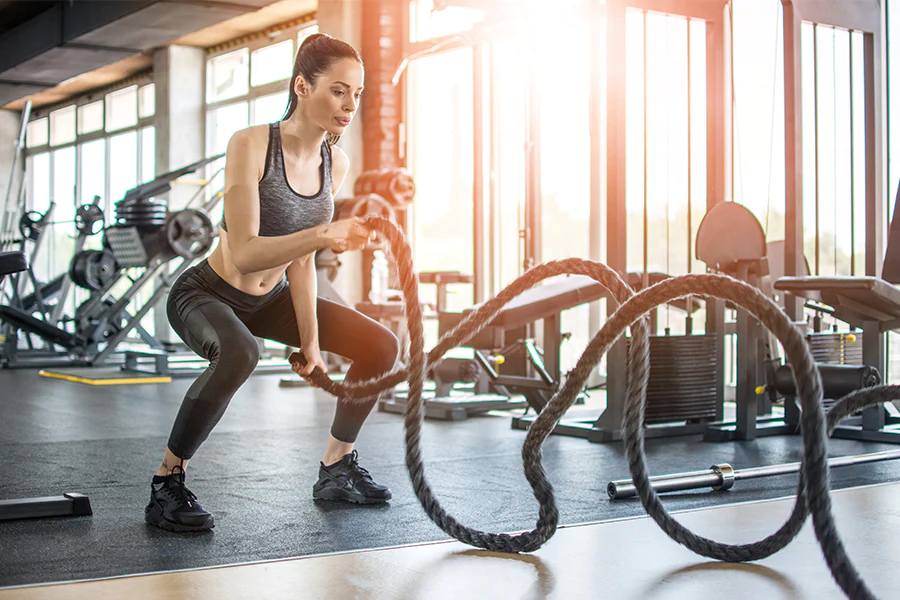
Importance of Regular Physical Activity for Overall Well-Being
Reach for at least 150 minutes of moderate intensity activity or 75 minutes of vigorous intensity each week.
Exercise increases HDL (good) cholesterol while decreasing unhealthy triglycerides, decreasing risk for cardiovascular and blood vessel diseases.
Even if you can’t make time for frequent gym trips, incorporate physical activity into your everyday life in some form or another. Even small changes like walking to stores instead of driving them can add up to great health advantages over time.
Reduces Risk of Chronic Diseases
Exercise has proven itself as one of the most valuable weapons against chronic illnesses like cardiovascular disease, cancer and type-2 diabetes. Even increasing activity levels moderately can lower your risk of these illnesses; all it takes is switching up your routine by walking or cycling instead of driving to work, taking the stairs instead of an elevator and doing body weight exercises at home!
Being active not only increases high-density lipoprotein (HDL) cholesterol and decreases unhealthy triglycerides, which helps protect against heart and blood vessel disease, but it can also improve balance to help avoid falls and injuries as we age. According to the CDC’s recommendation of 150 minutes of moderate intensity aerobic physical activity and 75 minutes of vigorous intensity physical activity per week along with two days dedicated solely for muscle strengthening; even non-athletes can reap these rewards!
Boosts Energy Levels
Many people avoid exercising because they believe it will exhaust them, yet in actuality the opposite occurs. Exercise not only provides physical benefits such as improved cardiovascular health and overall fitness; it also increases production of important hormones and neurotransmitters that increase energy levels and stave off fatigue.
Chemical messengers produce energy for cells to use more effectively, helping the body metabolize food more quickly and prevent blood sugar spikes and valleys that lead to fatigue. Furthermore, aerobic activity increases oxygen delivery into the body – so regular runners or joggers often report feeling like they have more energy after going for a run/jog session.
Low-intensity exercise such as yoga or walking can be just as effective at increasing energy levels as high-intensity workouts, such as running. Yoga or walking offer easier on joints and is suitable for beginners while still increasing muscle strength, cardiovascular endurance and helping reduce stress & improve sleep quality.
Improves Mental Health
Though exercise can reduce waistlines, improve sexual life, and add years to one’s life expectancy, many are unaware that it also dramatically impacts mental health. When engaging in physical activity, your brain releases chemicals which boost self-esteem, memory retention, and create an overall more positive outlook on life.
Exercise also teaches us to deal with discomfort and stress better, which may explain why some studies indicate regular physical activity reduces anxiety symptoms.
Fitting exercise into an already-busy schedule may seem impossible, but by treating physical activity as a priority and necessity in your daily life, you may find ways to sneak small amounts in throughout the day. Consider scheduling your workouts during times when you have more energy like breakfast, lunchtime or after work before mid-afternoon slump. Or you could incorporate physical activity into everyday tasks like gardening or walking the dog!
Maintains a Healthy Weight
To successfully lose or maintain a healthy weight, the amount of calories consumed should equal those burned through exercise. Exercising can help you shed extra calories by burning energy and raising metabolism levels.
Physical activity helps strengthen muscles, improve bone health and boost mood. Furthermore, regular physical activity reduces triglycerides while raising high-density lipoprotein (HDL) cholesterol, thus decreasing your risk of cardiovascular disease.
However, regular physical activity doesn’t need to take the form of hours in a gym or running mile after mile – even small changes like walking instead of taking public transit or mowing the lawn can reap substantial rewards. Adults and older adults should aim for 150 minutes of moderate-intensity aerobic activity per week such as brisk walking, swimming or other cardiovascular exercises that raise your heart rate while making breathing harder like running or cycling and at least two days per week of muscle-strengthening exercises (such as strength training).


